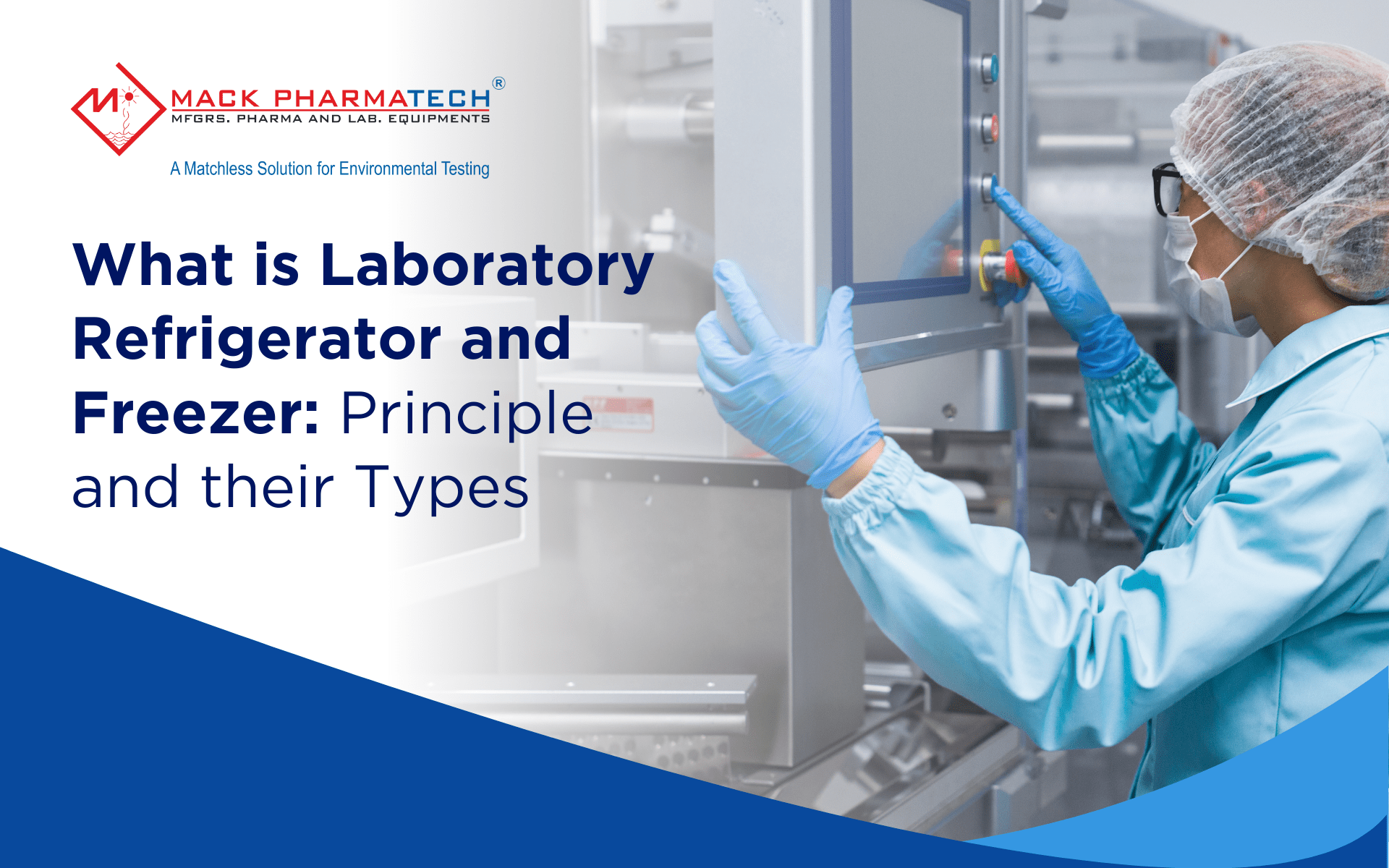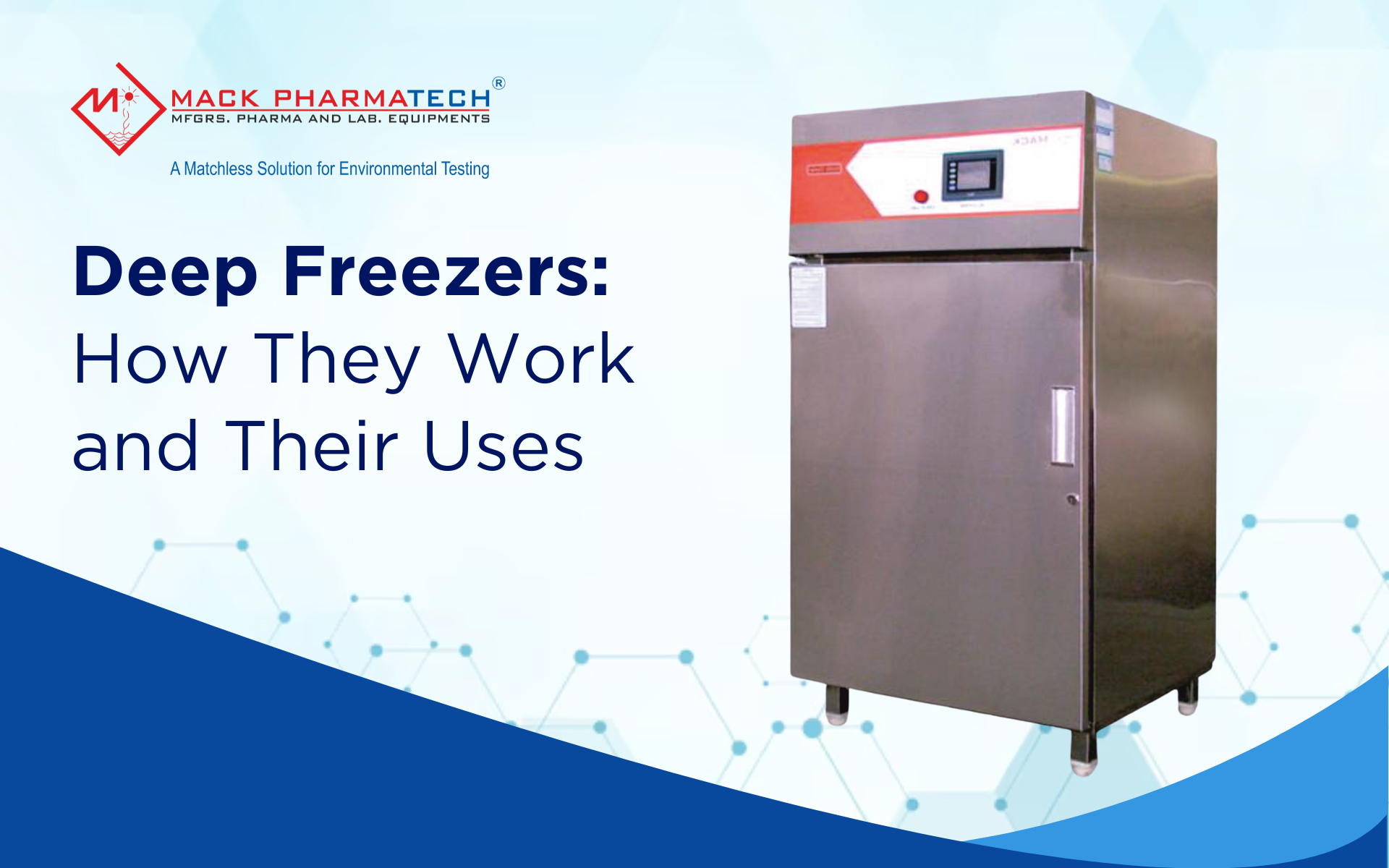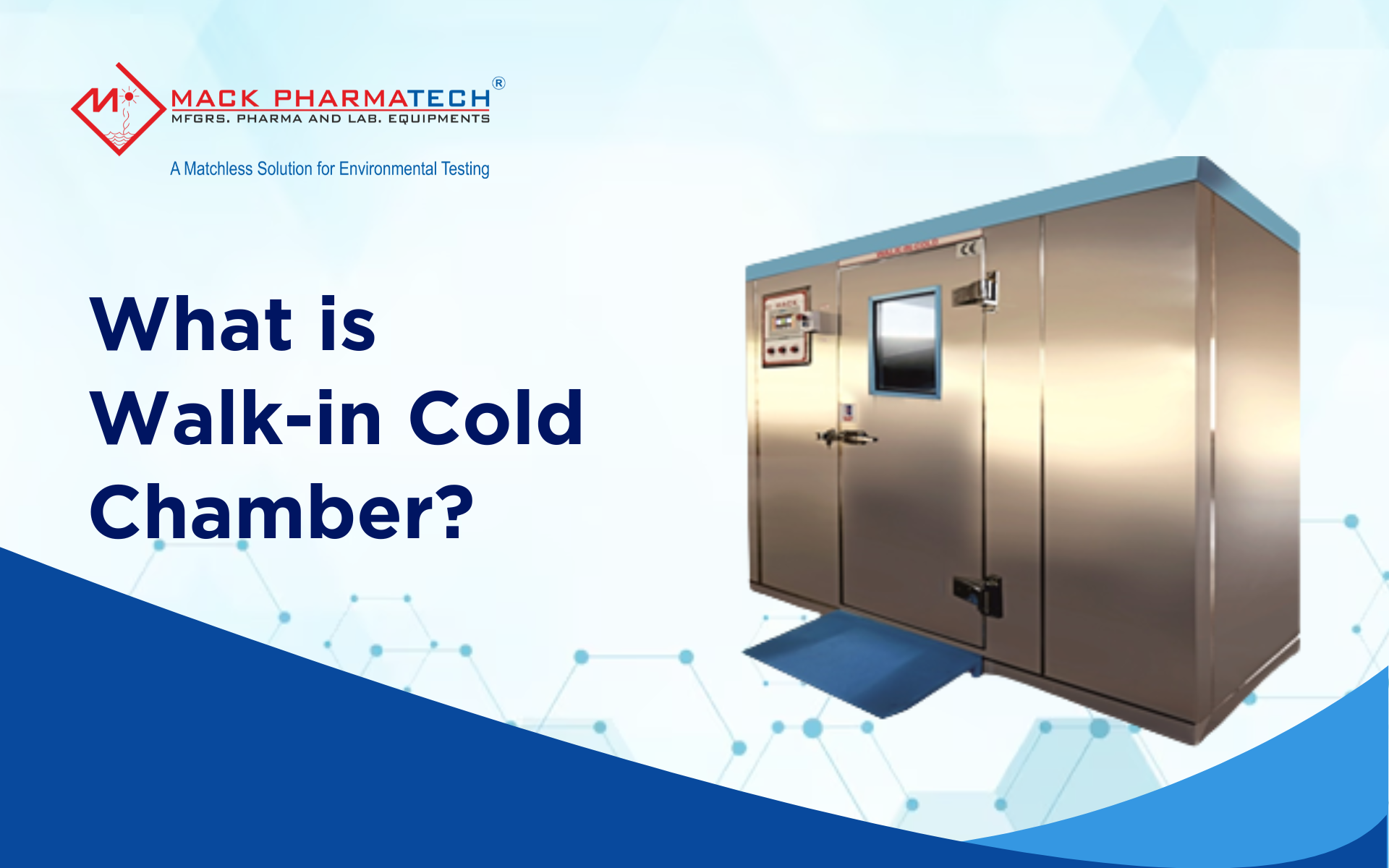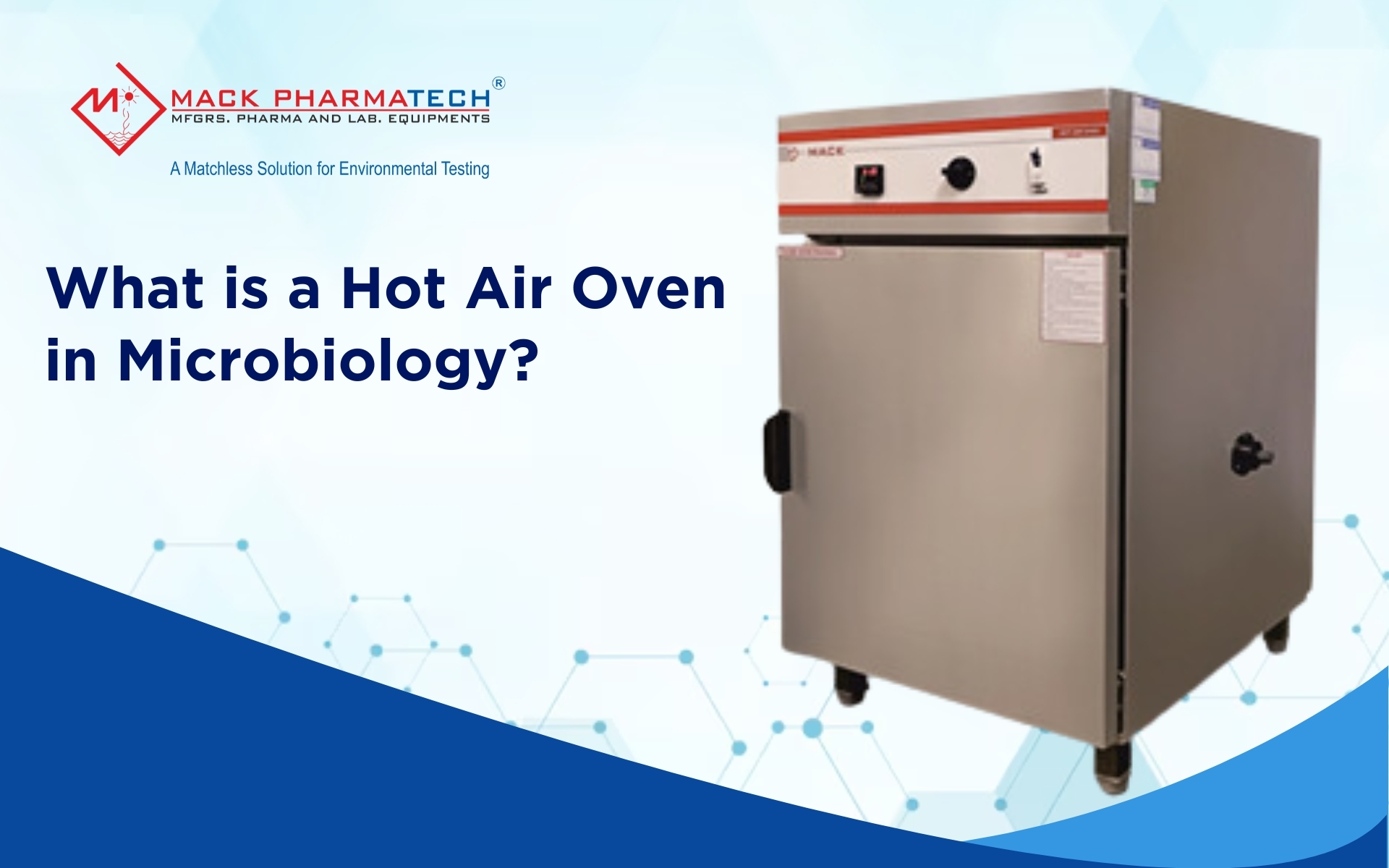A laboratory refrigerator is a specialized cooling unit designed to store medicines, vaccines, reagents, and biological samples at precise, stable temperatures.
When you work in pharmaceutical or medicine manufacturing, your lab’s cold storage isn't just about keeping things cool it’s about ensuring safety, stability, and regulatory compliance. That’s where laboratory refrigerators come in.
What is Laboratory refrigerators
Laboratory refrigerators are specialized cooling units designed for scientific, medical, and research use. Their key purpose is to store temperature-sensitive materials like pharmaceuticals, reagents, and biological samples in highly controlled environments.
Key Features of Laboratory Refrigerators:
- Maintains precise temperatures (typically 2–8 °C)
- Uniform cooling with minimal fluctuations
- Equipped with digital displays and alarms
- Spark-free interiors for safety with chemicals
- Data logging and monitoring for compliance
- Hygienic, easy-to-clean design
Laboratory refrigerators and freezers are temperature-controlled storage units specifically designed for scientific and medical use. They maintain consistent temperatures to preserve the integrity of samples, reagents, and other temperature-sensitive materials. These units are critical in environments like research labs, hospitals, pharmacies, and biotech companies.
Why This Matters to You
In pharma, even slight temperature deviations can degrade vaccines, reagents, or biological samples undermining efficacy, research, and production integrity. That’s why lab refrigerators offer far more than your regular household units.
Laboratory refrigerator principle
A laboratory refrigerator works on the principle of the vapour compression refrigeration cycle. This is the same scientific concept used in household fridges but with far more precision and control for lab use.
Key Working Steps:
- Compression – The refrigerant gas is compressed, raising its pressure and temperature.
- Condensation – The hot gas passes through condenser coils, releasing heat and turning into a liquid.
- Expansion – The liquid refrigerant passes through an expansion valve, dropping in pressure and temperature.
- Evaporation – The cold refrigerant absorbs heat from the storage chamber, cooling the inside to 2–8 °C (or lower for specialized units).
Types of Laboratory Refrigerators – Choosing What
|
Type |
Use Case |
|
General-Purpose (2–8 °C) |
Everyday sample, reagent, pharma storage |
|
Pharmacy/Vaccine Refrigerators |
Vaccine storage with backup and strict monitoring |
|
Blood Bank Refrigerators |
For blood components, often ~4 °C with safety alarms |
|
Explosion-Proof / Flammable Storage |
Labs handling volatile chemicals |
|
Chromatography Refrigerators |
Designed for storing solvents and columns |
|
Ultra-Low Temperature (ULT) Freezers |
Deep freezing samples to −80 °C or below |
|
Compact/Undercounter/Portable |
Space-limited labs or mobile demos |
How They Differ from Home Fridges
-
Precise Temperature Control: Typical range is 2–8 °C, with tight stability and minimal temperature drift
-
Advanced Monitoring & Alarms: Real-time alerts, data logging, and probes for compliance
-
Specialized Safety Features: Explosion-proof interiors, spark-free materials, flammable-chemical-safe designs
-
Regulatory Ready: Engineered to comply with standards from agencies like FDA or EMA
- Durable & Cleanable: Built for lab conditions; hygienic design and easier decontamination
How to Choose the Right Lab Refrigerator
Selecting the right unit depends on your specific needs. Here are some factors to consider:
1. Identify Your Storage Needs
- What are you storing? Vaccines? Blood? Solvents? Some require standard 2–8 °C, others need −80 °C ULT.
- How much space and access frequency? Choose between upright, undercounter, or bench-top models.
2. Prioritize Temperature Stability & Monitoring
- Look for features like multi-point sensors, alarms, and data logging to protect sample integrity and meet audit requirements.
3. Safety & Compliance
- If you handle chemicals, an explosion-proof or spark-free design is non-negotiable. Also ensure energy efficiency and regulatory labels like GWP-safe refrigerants
4. Ease of Maintenance
- Look for defrost cycles, easy-to-clean interiors, and accessible compressors or filters these ensure performance longevity.
5. Budget Smarts
- Price ranges vary widely from ~$800 for small units to $15K+ for explosion-proof or ultra-low units. Tailor spend to critical lab need
Key Components of Laboratory Refrigerators
Understanding the parts of these units can help you choose the right one for your needs. Here are the main components:
1. Compressor
The compressor is the heart of the refrigeration system. It pumps refrigerant through the system, enabling the cooling process.
2. Condenser Coils
These coils dissipate heat from the refrigerant, allowing it to transition from a gas to a liquid.
3. Evaporator Coils
Located inside the storage compartment, these coils absorb heat, cooling the interior.
4. Thermostat
The thermostat regulates the temperature, ensuring it stays within the desired range.
5. Insulation
High-quality insulation minimizes heat transfer, improving energy efficiency and temperature stability.
6. Door Seals
Tight door seals prevent warm air from entering the unit, maintaining consistent internal temperatures.
Applications of Laboratory Refrigerators and Freezers
Laboratory refrigerators and freezers are used in a wide range of industries. Here are some examples:
1. Healthcare and Pharmaceuticals
- Storing vaccines, medications, and biological samples.
- Preserving blood and plasma in blood banks.
2. Research and Development
- Maintaining the integrity of cell cultures, enzymes, and reagents.
- Storing samples for long-term research projects.
3. Food and Beverage Industry
- Testing food products for safety and quality.
- Storing samples for microbial analysis.
4. Industrial and Chemical Labs
- Storing flammable chemicals safely in explosion-proof units.
- Preserving chemical reagents for quality control testing.
Benefits of Laboratory Refrigerators and Freezers
Why are these units so widely used? Here are some of their key benefits:
1. Precise Temperature Control
Laboratory refrigerators and freezers offer accurate temperature control, ensuring the safety and integrity of stored materials.
2. Reliable Performance
Designed for continuous operation, these units provide consistent performance even in demanding environments.
3. Compliance with Industry Standards
Many units are designed to meet regulatory standards like ISO 9001 and CDC guidelines, ensuring compliance in healthcare and research settings.
4. Advanced Features
Modern units come with features like digital temperature displays, alarms, and data logging, making them easier to monitor and maintain.
Laboratory refrigerators are indispensable tools for preserving the integrity of temperature-sensitive materials. Whether you’re storing vaccines, biological samples, or flammable chemicals, choosing the right unit is crucial for ensuring safety, compliance, and reliability.
At Mack Pharmatech, we offer a wide range of laboratory refrigerators and freezers designed to meet the needs of various industries. Explore our products today or contact us for a consultation to find the perfect solution for your lab.
By understanding the principles, parts, and types of laboratory refrigerators and freezers, you can make informed decisions that enhance the efficiency and safety of your operations.
Can you use a home fridge for laboratory samples?
No home units lack temperature consistency, alarms, and appropriate shelving. Studies show even small fluctuations can ruin vaccines and samples.
How often should I calibrate or log temperatures?
Best practice: continuous monitoring with logs and monthly calibration checks. Automated systems ease compliance.
Is ULT really required?
Yes long-term storage of nucleic acids, enzymes, or cell lines may require −80 °C or lower. ULT freezers are the standard
What if I store flammable materials?
Use explosion-proof or flammable-material-rated units these have spark-free interiors and safety vents










